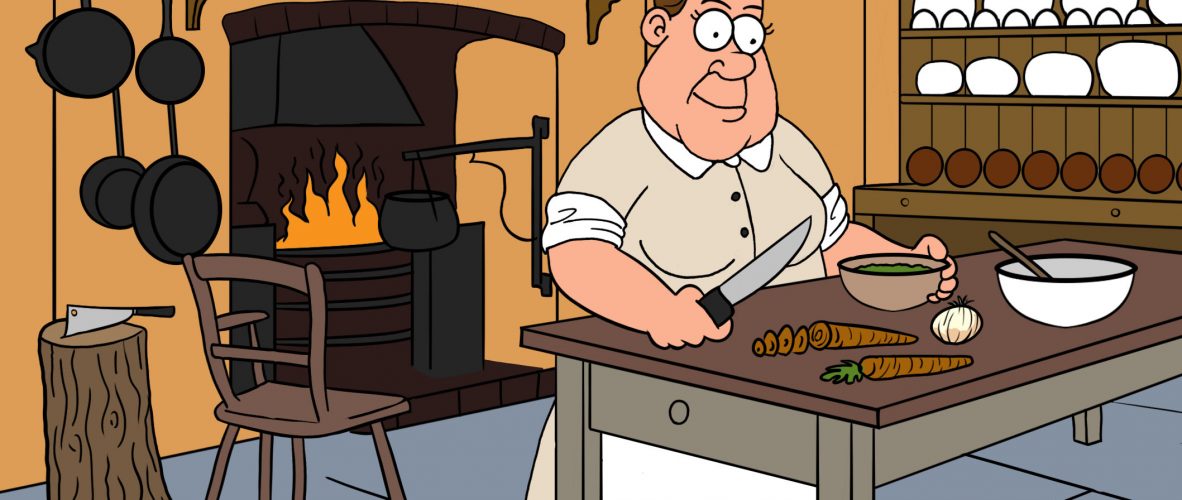after her coronation in 1837? Have a parliamentary meeting? Have tea with all the royal dignitaries? No – she gave her dog, Dash, a bath.

Ingredients
Steps
Take a loin of pork, skin it, cut it into stakes, season it with salt, nutmeg and pepper; make a good crust, lay a layer of pork, and then a large layer of pippins pared and cored, a little sugar, enough to sweeten the pye, then another layer of pork; put in half a pint of white wine, lay some butter on the top, and close your pye; if your pye is large, it will take a pint of white wine.
Hannah Glasse
JL Note: ‘a good crust’ means ‘nice pastry’ and ‘close your pye’ means ‘ put a pastry lid on it’.